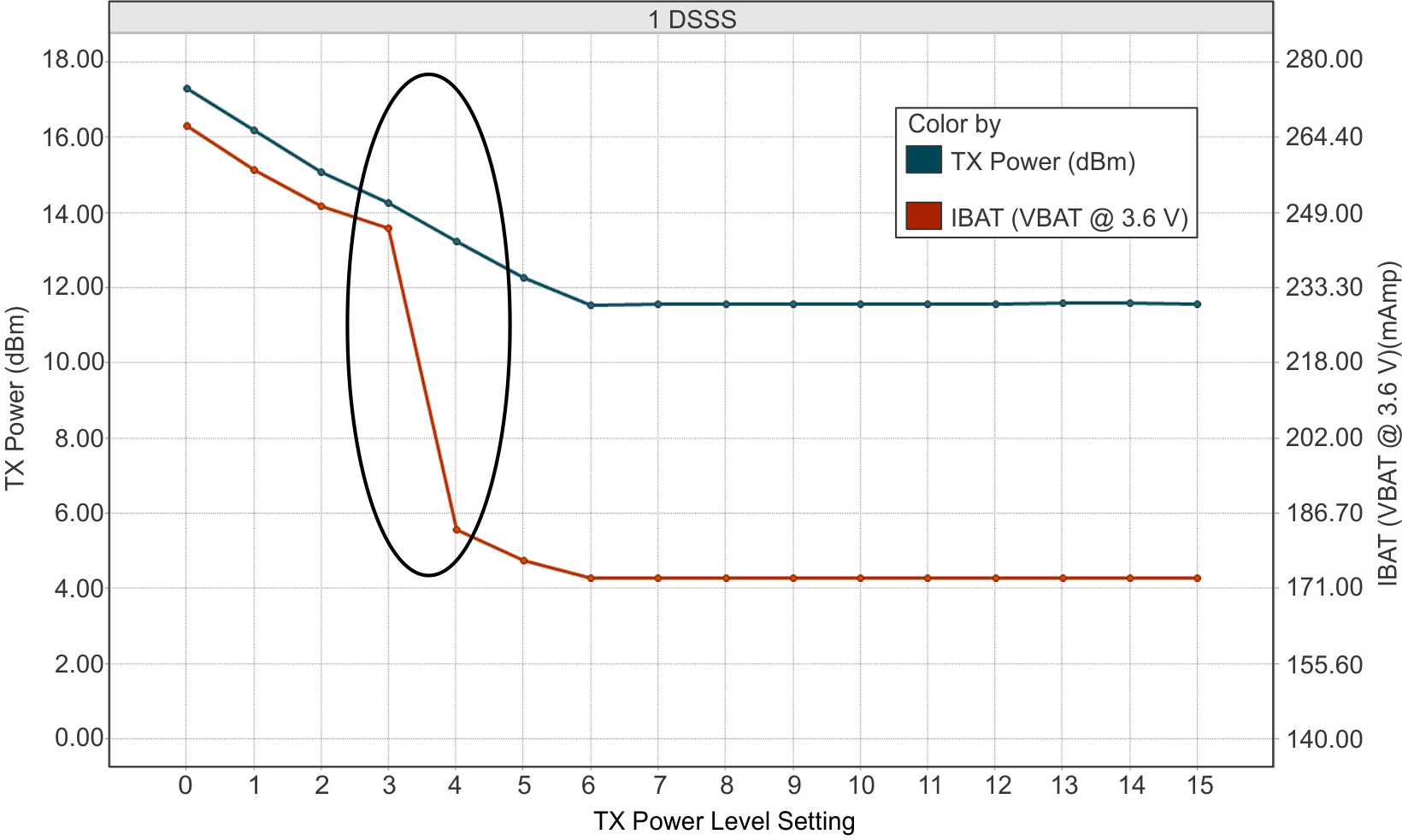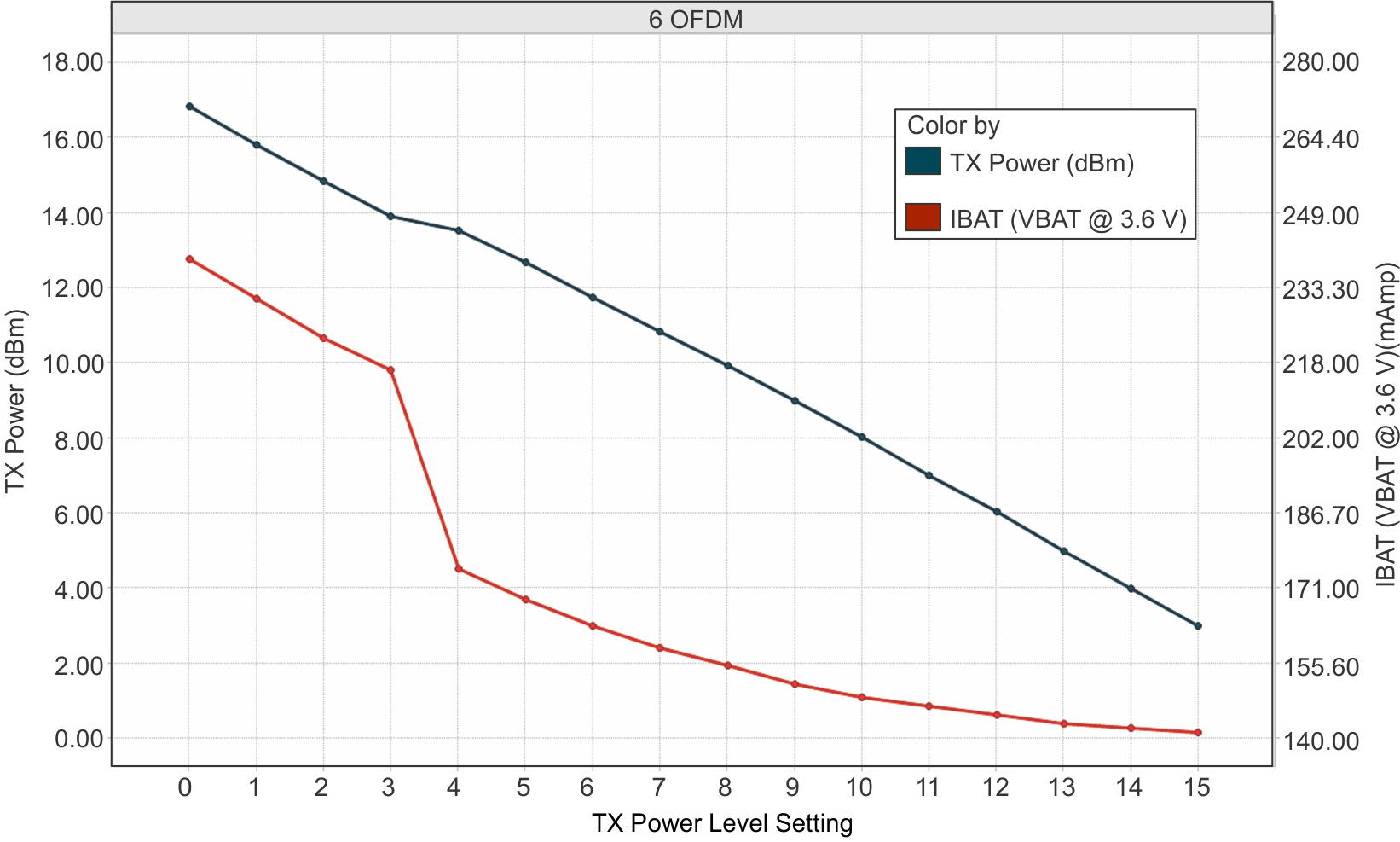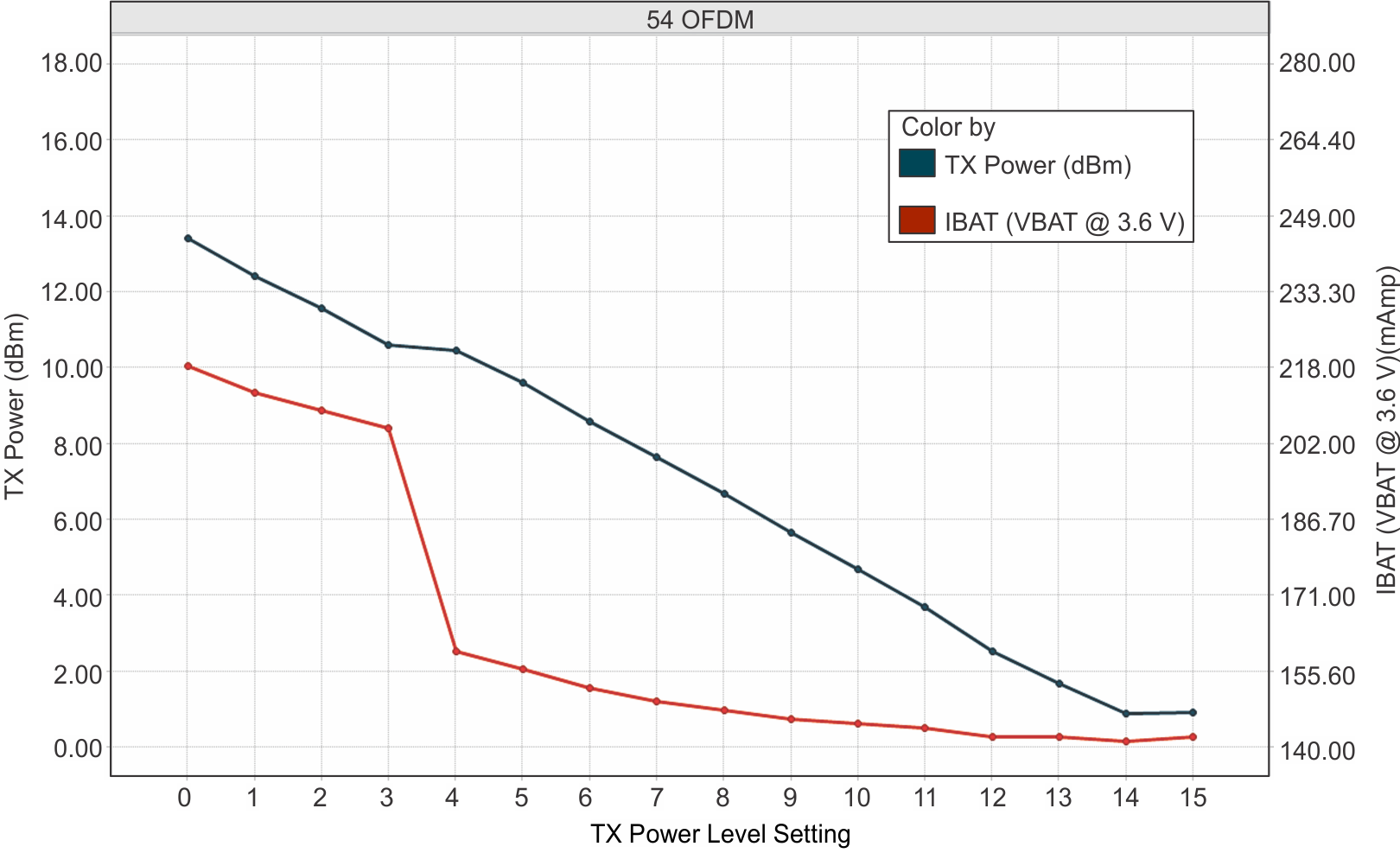JAJSE43E March 2017 – May 2021 CC3120MOD
PRODUCTION DATA
- 1 特長
- 2 アプリケーション
- 3 概要
- 4 機能ブロック図
- 5 Revision History
- 6 Device Comparison
- 7 Terminal Configuration and Functions
-
8 Specifications
- 8.1 Absolute Maximum Ratings
- 8.2 ESD Ratings
- 8.3 Recommended Operating Conditions
- 8.4 Current Consumption Summary
- 8.5 TX Power and IBAT versus TX Power Level Settings
- 8.6 Brownout and Blackout Conditions
- 8.7 Electrical Characteristics
- 8.8 WLAN Receiver Characteristics
- 8.9 WLAN Transmitter Characteristics
- 8.10 Reset Requirement
- 8.11 Thermal Resistance Characteristics for MOB Package
- 8.12 Timing and Switching Characteristics
- 8.13 External Interfaces
- 9 Detailed Description
- 10Applications, Implementation, and Layout
- 11Environmental Requirements and Specifications
- 12Device and Documentation Support
- 13Mechanical, Packaging, and Orderable Information
8.5 TX Power and IBAT versus TX Power Level Settings
Figure 8-1, Figure 8-2, and Figure 8-3 show TX Power and IBAT versus TX power level settings for modulations of 1 DSSS, 6 OFDM, and 54 OFDM, respectively.
In Figure 8-1, the area enclosed in the circle represents a significant reduction in current during transition from TX power level 3 to level 4. In the case of lower range requirements (14-dBm output power), TI recommends using TX power level 4 to reduce the current.
 Figure 8-1 TX Power and IBAT vs TX Power Level Settings (1 DSSS)
Figure 8-1 TX Power and IBAT vs TX Power Level Settings (1 DSSS)
 Figure 8-2 TX Power and IBAT vs TX Power Level Settings (6 OFDM)
Figure 8-2 TX Power and IBAT vs TX Power Level Settings (6 OFDM) Figure 8-3 TX Power and IBAT vs TX Power Level Settings (54 OFDM)
Figure 8-3 TX Power and IBAT vs TX Power Level Settings (54 OFDM)